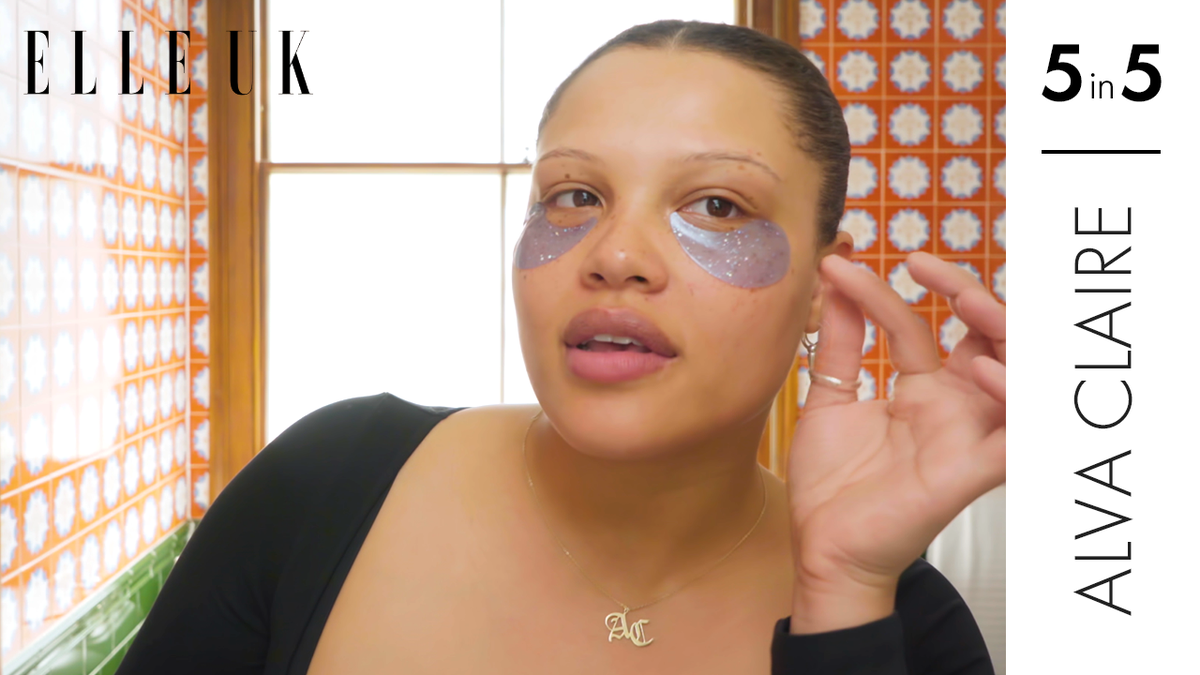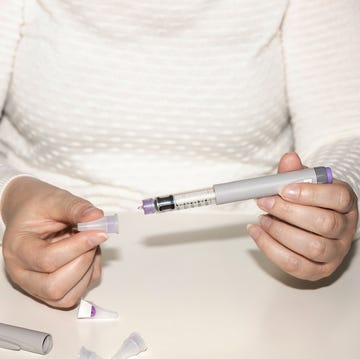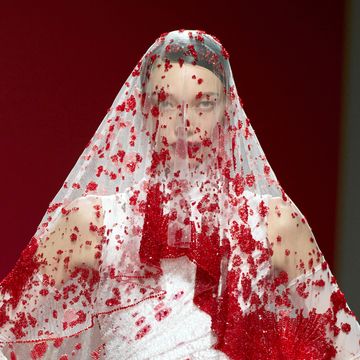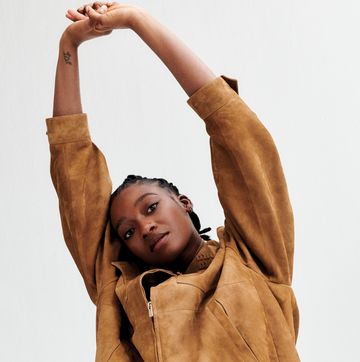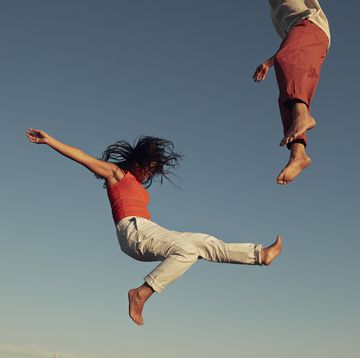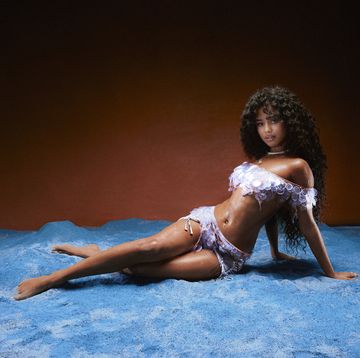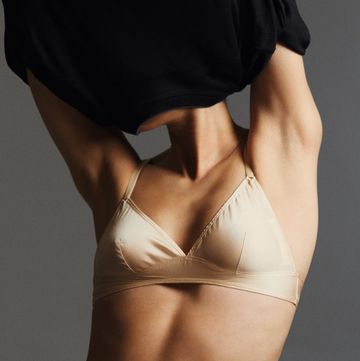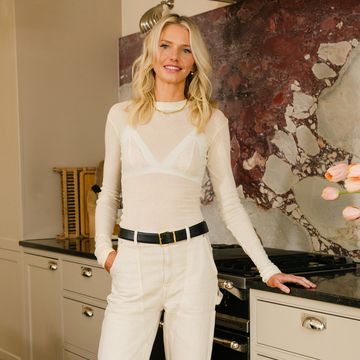The luxury fashion space is in flux. With Matches closing down and Farfetch’s future on the rocks, it’s no secret that change is afoot and what could be a proportional slow down on people willing to fork out for luxury goods. Analysts at forecasting agency Bain have suggested that we’re entering a ‘Darwinian phase’ and in a natural selection, survival of the fittest analogy, it’s the fashion brands with beauty businesses that will outperform their peers and ride the waves of uncertainty. Which begs the question: can doubling down on cosmetics provide some stability for the couture crowd?
It's certainly been the case for fashion houses like Chanel, DIOR and Givenchy who are stalwarts in the luxury beauty arena. For Chanel, it’s estimated that almost 40% of their total sales is from beauty, primarily fragrance and make-up. Last year they opened more than 20 beauty boutiques – mainly in Asia and the US, and cosmetics sales recovered to pre-pandemic levels, with face and lip categories the main growth drivers thanks to innovations such as Lipstick 31 Le Rouge – Chanel’s first refillable lipstick housed in a faceted square glass case.
'Beauty is becoming increasingly important for luxury brands as an equity and sales driver as competition in the category heats up. It’s a more stable business compared to fashion and has been shown to buck the trend during any recession,' explains Wizz Selvey, a retail expert and trend forecaster.
The allure of launching into categories like make-up and skincare is plain to see. 'Providing an accessible price point for customers to own a piece by a luxury brand, it appeals to the aspirational consumers who want to buy into the brand but can’t absorb the costs, as well as the customers who already love the brand and want to extend their purchase from fashion to beauty,' continues Wizz.
FIND OUT MORE ON ELLE COLLECTIVE
Traditionally, it was fragrance that was fashion’s first port of call when expanding into the beauty space, but with more niche fragrances on offer, brands are setting their sights on the make-up category. According to the NPD Group, prestige make-up sales grew by 18% in 2022 while fragrance only rose by 11%. It does make sense – cosmetics can be seen as a natural extension of a brand’s blueprint, reflecting their seasonal colour palette’s, designs and runway inspirations. It’s a category far more aligned to fashion than fragrance.
In March, Celine announced it would be launching Celine Beauté – the brand’s first cosmetics line. With plans to introduce mascara, eyeliner, lip balms and nail varnish in 2025, it’s lipstick ‘Rouge Triomphe’ will be the first skew we see, arriving in autumn. The start of this year also saw Prada relaunch their beauty line after parting ways with Puig and resigning with L’Oréal, while their sister brand Miu Miu has also become part of the L’Oréal Luxe portfolio and will be unveiling its debut beauty launch in 2025. Marc Jacobs will be relaunching make-up in 2025 under a new contract with Coty. These will sit alongside the likes of Gucci, Hermes, Carolina Herrera, Valentino, Christian Louboutin and Dries van Noten who have added to the explosion of fashion labels launching colour.
Make-up is also a surefire way to reach a newer, younger customer. Cheaper, more affordable skews that lean into social movements such as the #cheapestthing hashtag on TikTok have demonstrated the younger generations’ desire to hunt out affordable items from luxury brands. Case in point – Dries Van Noten has purportedly attracted a new audience who are happy to invest in their £34 lipsticks, despite the dresses being over budget.
With beautiful cases, refillable options and the designer label usually emblazoned on the packaging, these brands are positioning their lipsticks and palettes as the new ‘designer sneaker or IT bag.’ Rather than a throwaway purchase, they’re fast becoming iconic. 'A lipstick is one of the few products that you can carry around and use in public so it can double up as a status symbol,' admits Wizz.
Lisa Payne, Head of Beauty at Stylus Innovation agrees. 'A Hermes or a Chanel lipstick produced from a handbag is still an incredibly strong way to communicate status and wealth, regardless of demographic.' There’s also the hope for these brands that once these younger clientele have become hooked on the make-up, they might graduate into buying a bag or dress in the future.
Of course, we’ve seen the power of beauty in economic downturn before. The lipstick effect – a term coined back in 2001 by Estee Lauder’s chairman Leonard Lauder who noticed that despite the recession, people wanted to treat themselves to more affordable, but still aspirational items – remains relevant. Despite being almost 20 years later, it continues to be lipsticks that are luring in customers as a trusty pick-me-up. 'Over the past five years new entrants into the industry such as Louboutin, Valentino and Gucci have created a ‘lipstick lux boom’,' continues Wizz.
That said, selling dreams is no longer enough for a lot of savvy customers, innovations are equally as important. 'You can look at brands like Chanel and DIOR who are very successful, but they’ve been around for years and have got strong in-house teams that know how to deliver. Now, with the flurry of fashion brands trying their hand at beauty, the product itself needs to be incredible – it doesn’t matter how much gravitas the designer’s name has, they can’t just rest on their laurels,' says Priya Rao, Executive Editor at The Business of Beauty at BoF. 'It’s not as easy as it looks to build a successful beauty brand and fashion don’t realise the cadence at which beauty operates. It’s fast-paced and timely compared to designer fashion which is used to setting the trends, but beauty is responsive and with visual platforms like TikTok and Instagram to keep on top of, it’s much harder than they think.'
This is one risk they need to be aware of, warns Lisa. 'At times, designer beauty was often thought of as an afterthought accessory and this was felt in unsophisticated formulas. With more innovation and newness from smaller, independent and more accessible players, beauty customers have become fully aware of what they can get and how sometimes, more budget products will be superior in finish, texture and wear than the pricier examples. However, the reimagining’s from some of the bigger brands now means a renewed interest.'
Designers are having to make the call whether to keep their beauty business in-house or team up with an established beauty conglomerate such as Coty, L’Oreal, Puig or Estee Lauder to ensure they stay in the right lane. It's crucial to realise it’s not a one-size-fits-all transition from fashion, too. 'Some brands have learnt the hard way and these things can’t be rushed – there needs to be credibility,' admits Priya.
For this reason, Priya suggests designer brands should take an ‘incubator’ approach, citing that starting from scratch can be easier than fixing something. 'It will be interesting to see what Balenciaga and Cartier do because they’re trying to create their own brands with a unique identity. As is Hedi Slimane at Celine who wants to connect fragrance to fashion to cosmetics so it all aligns.'
Continuity, credibility, distribution and customer engagement strategy will be what makes or breaks these prestige offerings say the experts, because despite beauty looking like an easy win, it’s both saturated and sophisticated. And at the end of the day, while everyone loves the idea of a designer lipstick, how many do we really need?
ELLE Collective is a new community of fashion, beauty and culture lovers. For access to exclusive content, events, inspiring advice from our Editors and industry experts, as well the opportunity to meet designers, thought-leaders and stylists, become a member today HERE.




